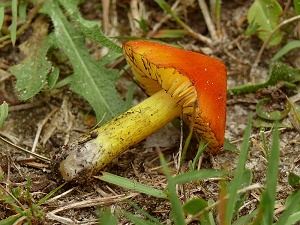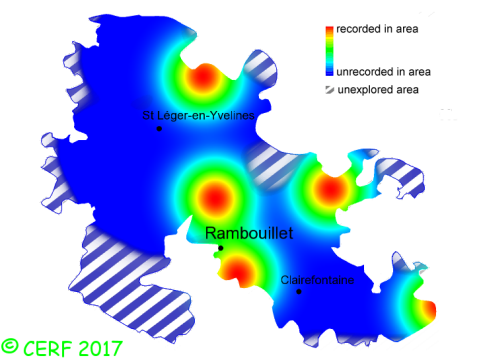| Hygrocybe conica (Schaeff.:Fr.) P. Kumm. |
|
|
|
|
|
|
The cap is yellow or orange to black, with a central umbo. The cap surface is smooth, a bit viscid. The stem is bright yellow to black, without ring. The flesh is white to yellow, turning black when exposed to air; its taste is mild; the odour is not distinctive; its texture is fibrous. The gills are white or pale yellow, turning black when touched or aged, free, distant . The spore print is white. This species is saprophytic. It grows on the ground. The fruiting period takes place from May to November.
Chemical tests : none. Distinctive features : turning black when touched Hygrocybe conica is quite rare and localised in the forest of Rambouillet, and is frequent, more generally speaking . | ||
|
page updated on 14/01/18

